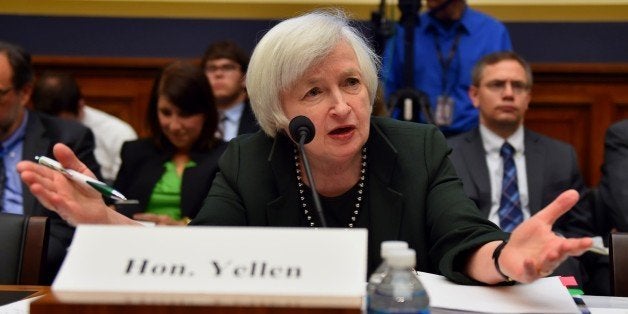
What if you gave a party and no one showed up? That's a social nightmare. And it might become the Fed's problem. After months and months of waiting for the Fed to raise interest rates, what if it happens - and the market doesn't even care?
The media will care, and the business talk shows will have plenty to jabber about, no matter what the Fed does. Guessing the Fed's strategy has become a headline issue. But the simple fact is that the Fed has never really been able to change the tide of the markets and the economy without a Herculean effort - much as we saw in 2008-09. And one small uptick in the Fed's target interest rate is unlikely to have market-moving effects right now.
At least that's what history tells us.
History of Hikes
A study by Martin Hochstein, senior strategist at Allianz Global Investors, looks at what's happened during previous Fed rate-hike cycles. There have been six such instances since 1983 - and while each happened in different economic circumstances, none produced an abrupt turn in either the financial markets or the economy.
Most importantly, the initial rate hike isn't the most important move, or the only move, when the Fed starts to act. The study of the six tightening cycles, with starting dates in 1983, 1986, 1988, 1994, 1999, and 2004, shows that the episodes lasted on average 414 days - or almost 14 months. The Fed increased interest rates by an average of 281 basis points during those periods.
Obviously, averages mask wide differences in each cycle, but it's clear that the first rate increase was not a blow to the economy, and rarely came as a surprise (the exception being 1994) - even back in the day when the Fed practiced great secrecy over its moves and rarely publicly telegraphed its intentions as it does today.
The Allianz study also shows that in every cycle the Fed didn't raise rates until the economy was well into an upswing, growing at " a decent pace" for several quarters prior to the first rate hike. But perhaps the most surprising result of this research is the fact that during all six of these rate-hike cycles, financial markets performed positively - in all asset classes.
In fact, and perhaps reflecting the underlying economic growth that triggered the rate hikes, commodities led the way with an average return of 25.2 percent, followed by 14.6 percent gains in global equities, and even 9.9 percent gains in U.S. equities during the rate-hike cycle.
The Current Fed Cycle
There's no doubt that the Fed wants to get interest rates back to "normal" - but what if the new normal means lower global interest rates? Global economic growth is slowing, led by declines in demand from China - and spreading (for different reasons) to countries ranging from Brazil and Venezuela in the south as well as Canada to the north, not to mention oil producing countries ranging from OPEC to Russia. And Europe has its own set of problems.
Lower global demand for raw materials caused by lower global growth and expectations are not the recipe for higher interest rates in the United States. In fact, if rates hadn't been kept artificially low for so long, the Fed might even be considering a cut in rates right now to stimulate global growth.
That's the Fed's dilemma. What if raising rates right now, in a tenuous global economy, acts as a magnet for foreign money and makes the U.S. dollar stronger. That could price our products out of the global marketplace, slowing our own economy.
But even worse, what if the United States raised interest rates and no one came to the economic party? What if the money coming into the United States seeking safety actually pushed our interest rates back down - as has happened in recent years? Would the Fed try to raise rates again, and again - as they have done in previous cycles? What good would that do - either for the U.S., or for world economic growth? It might only demonstrate how much less powerful the Fed has become in the new global economy.
It seems like the Fed is "all dressed up with nowhere to go" - certainly not to its own interest rate party. And that's The Savage Truth.